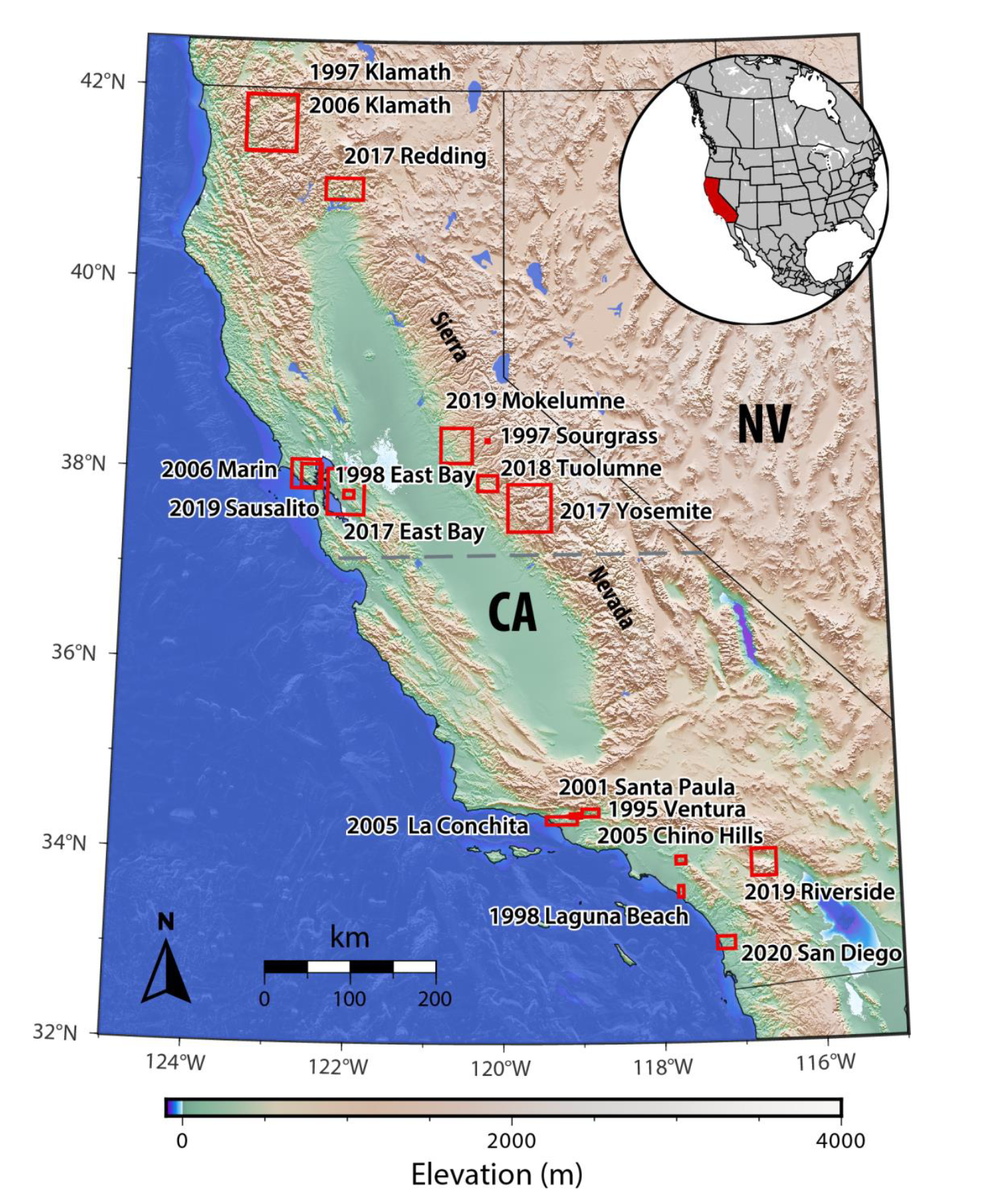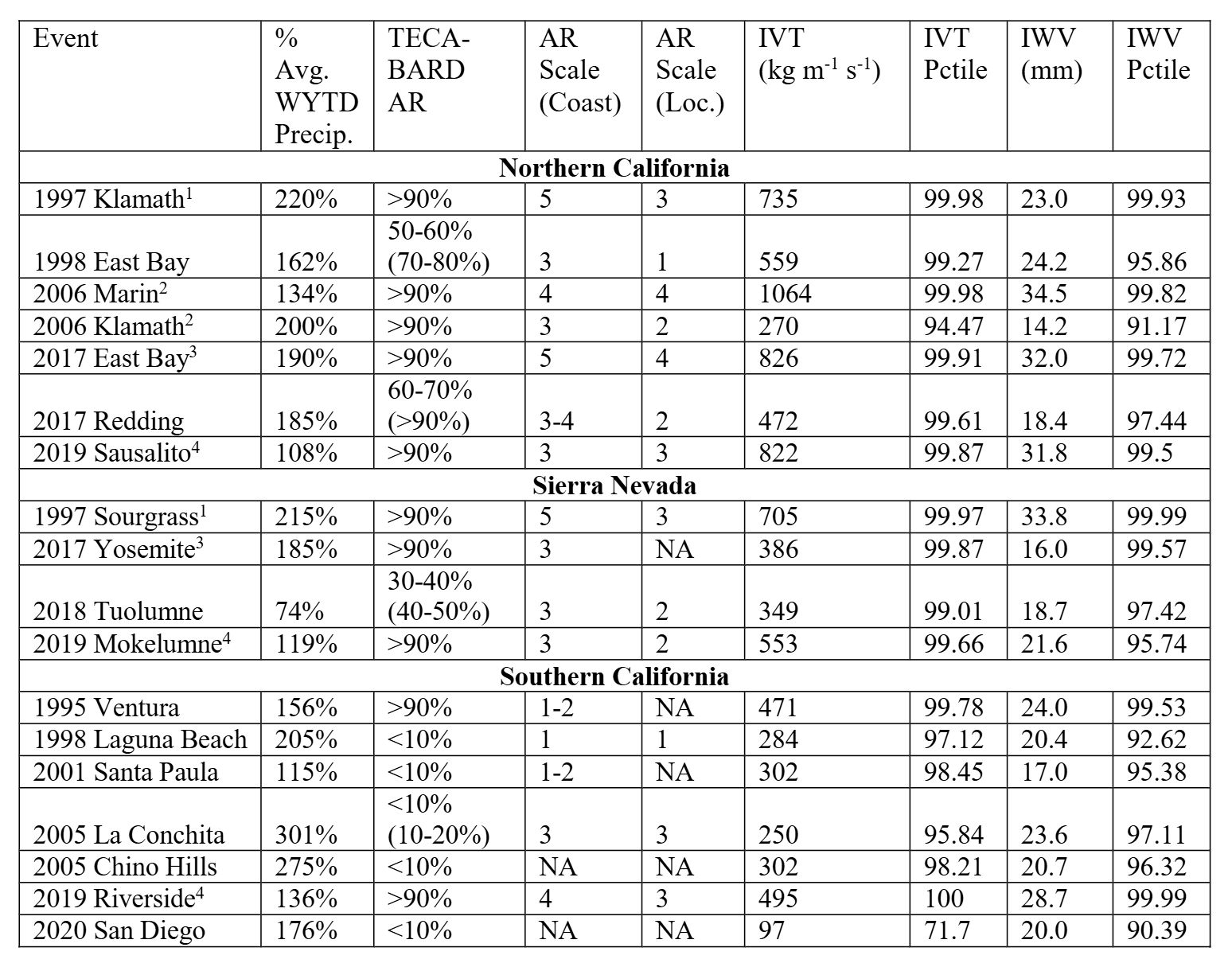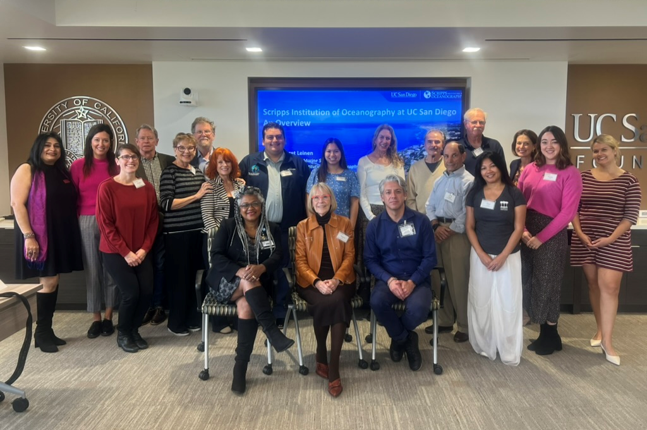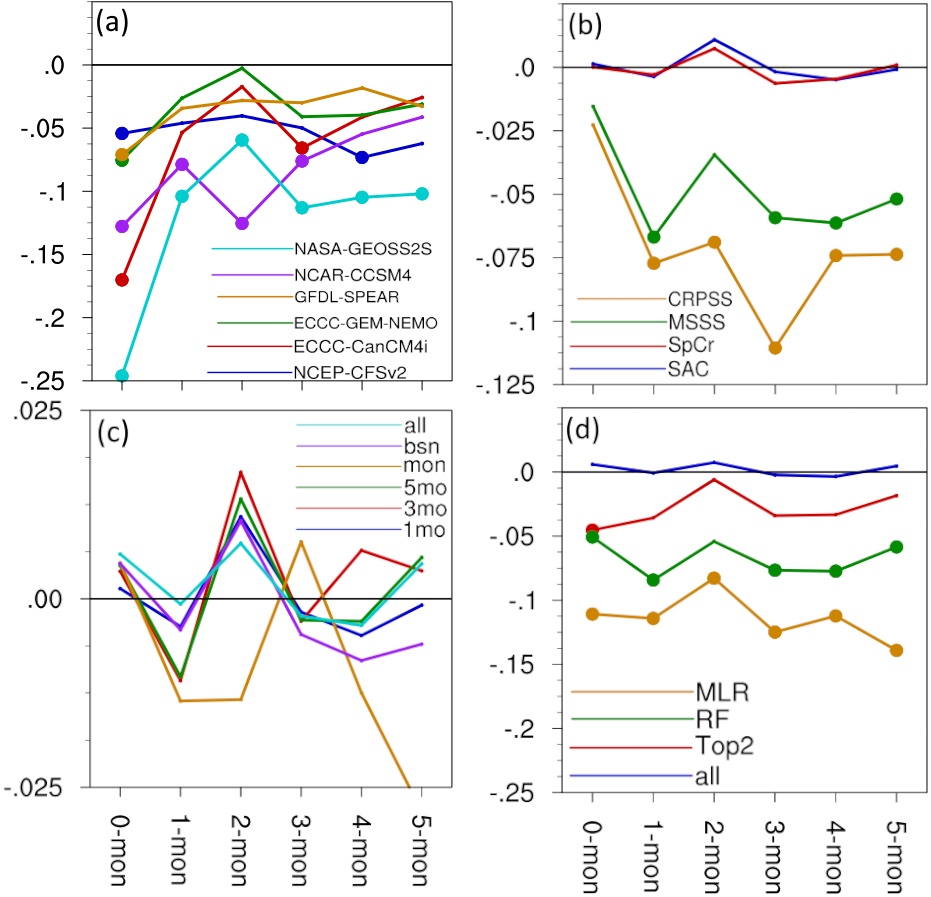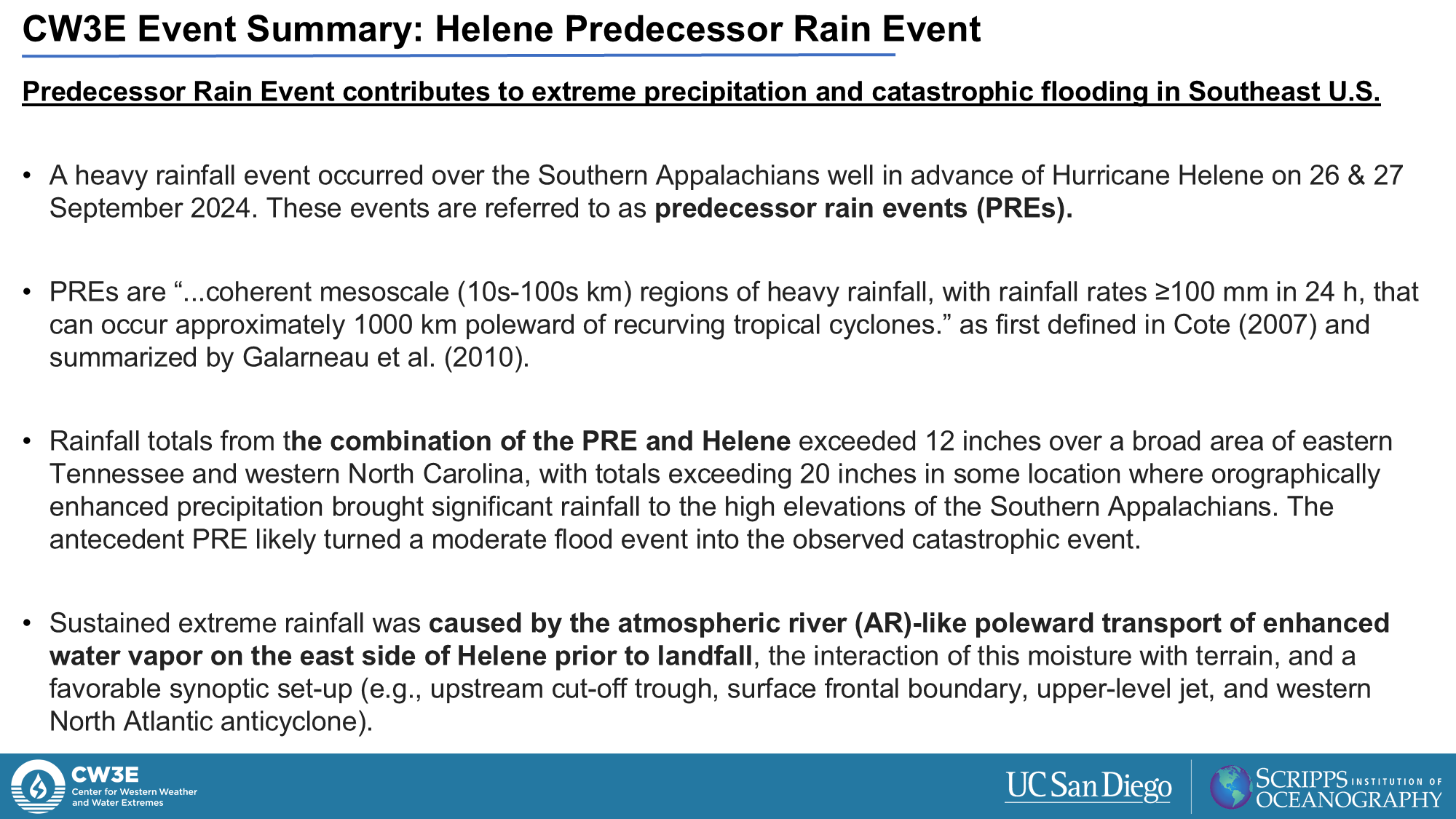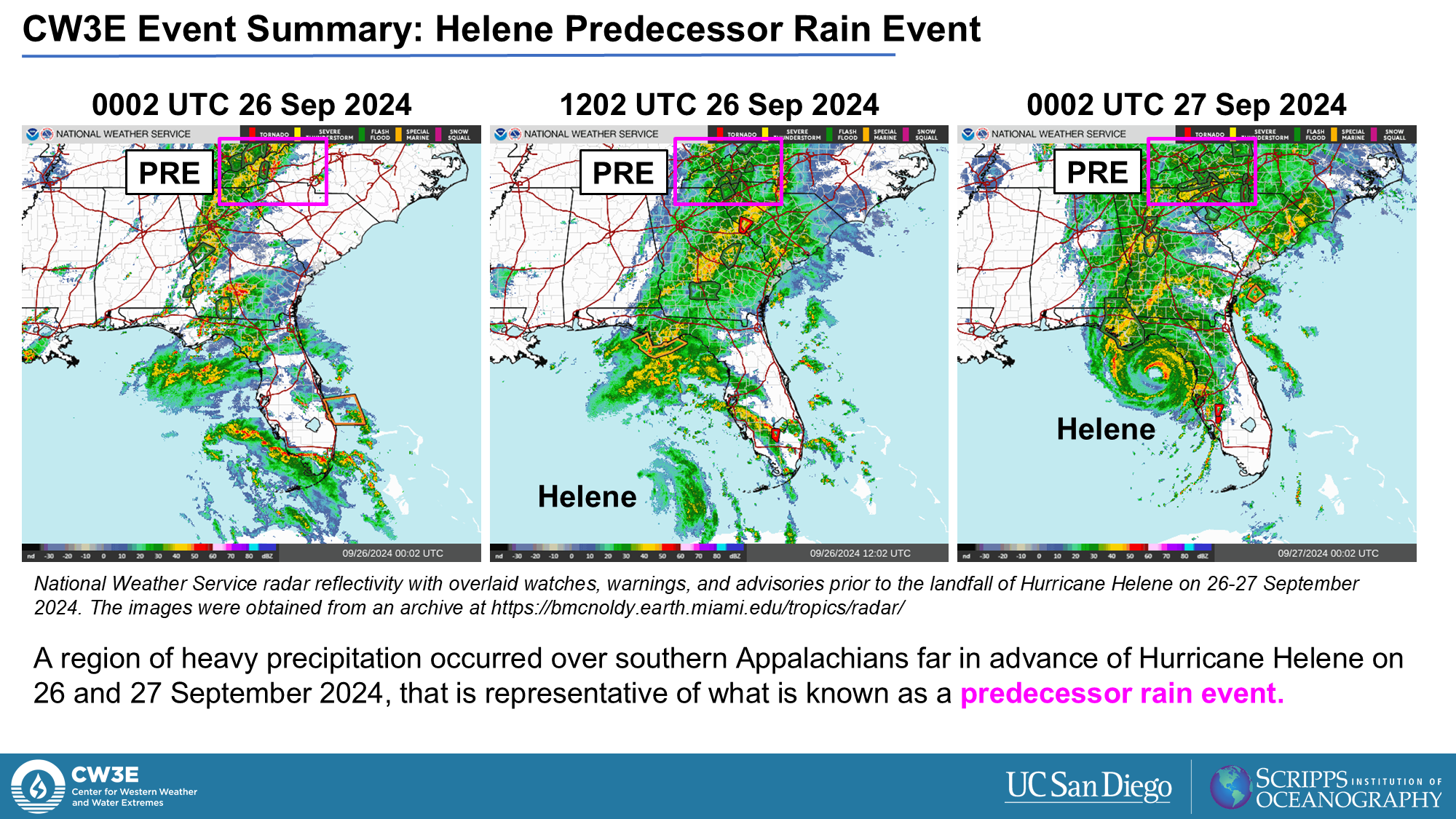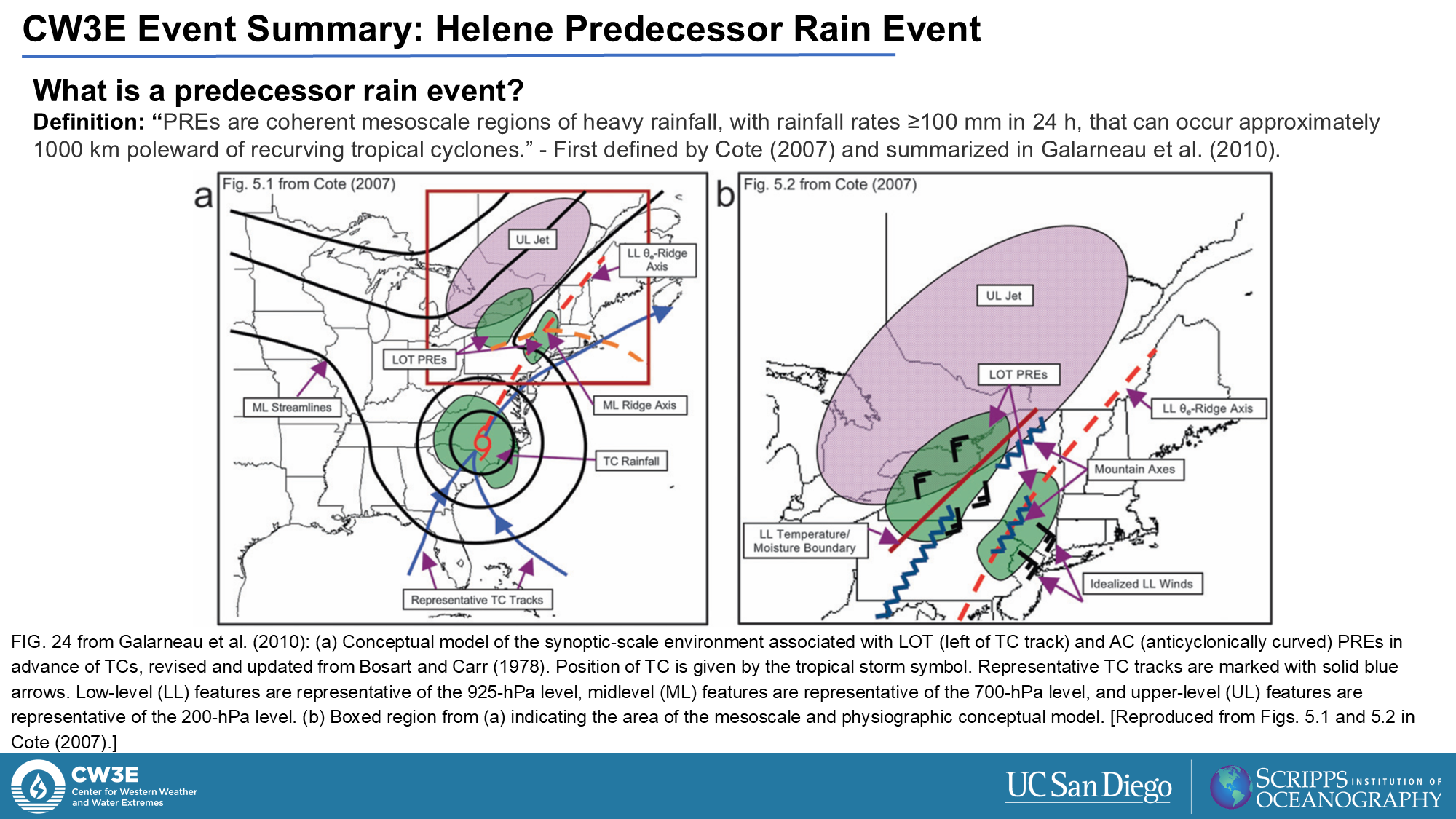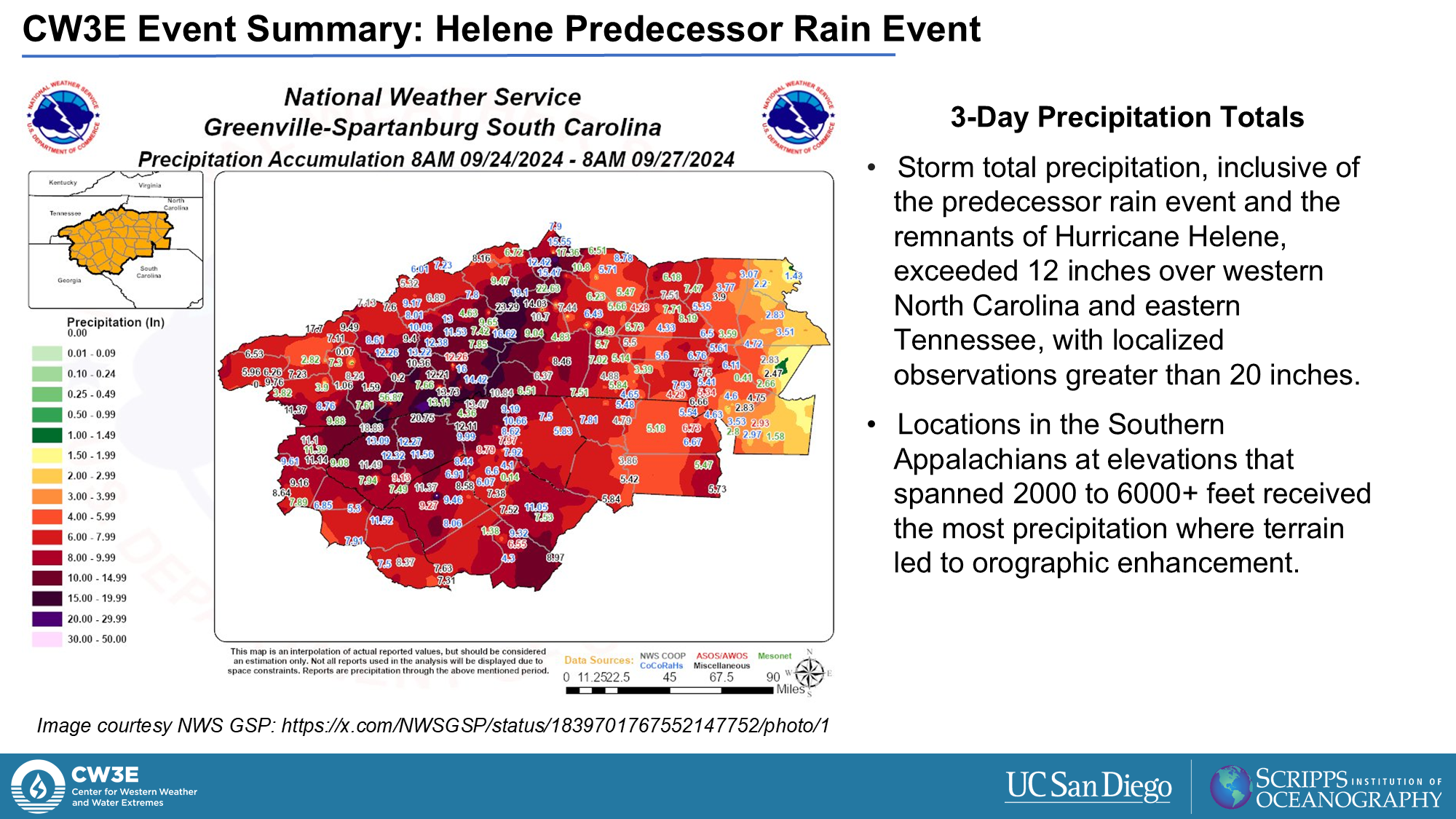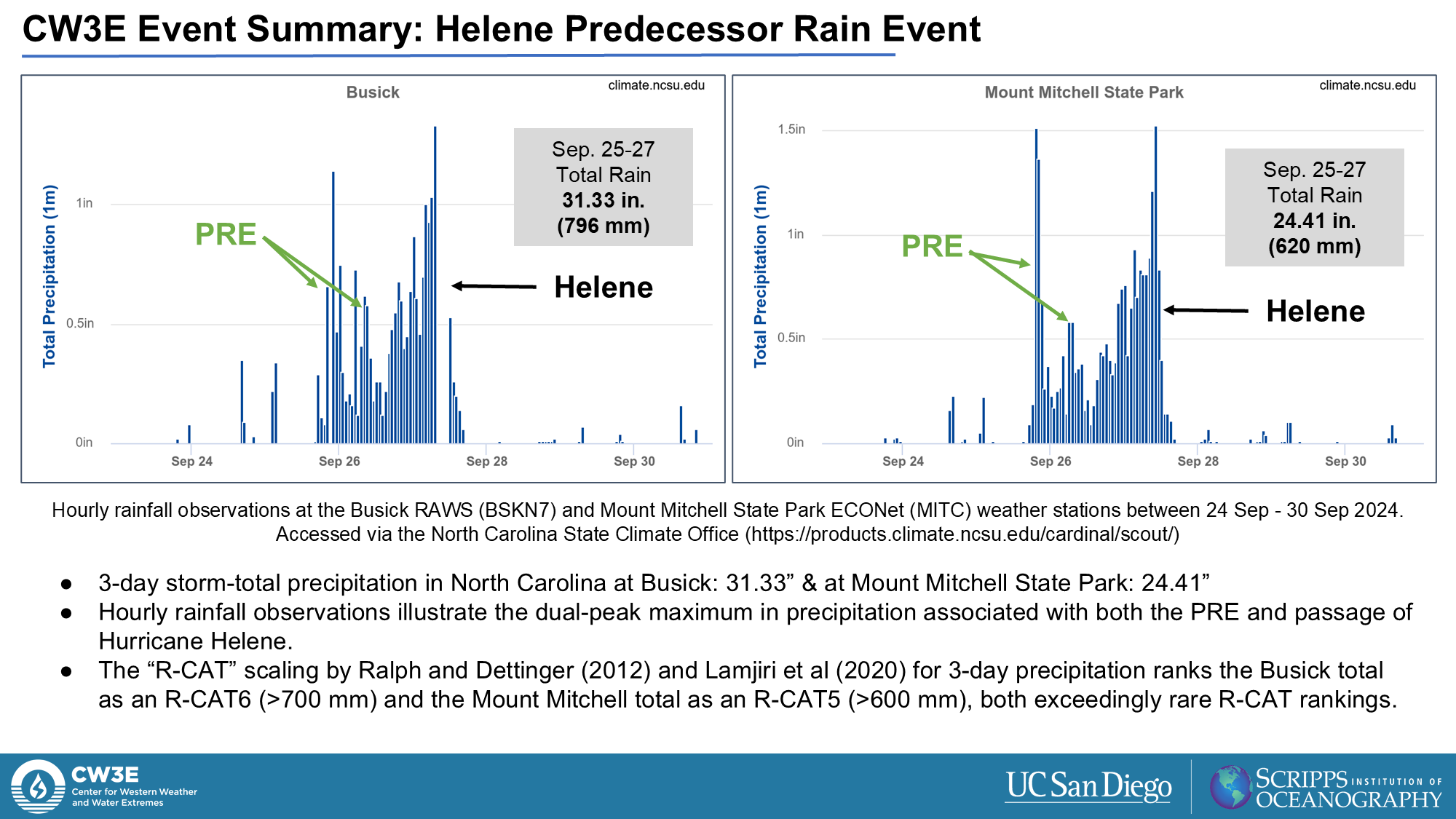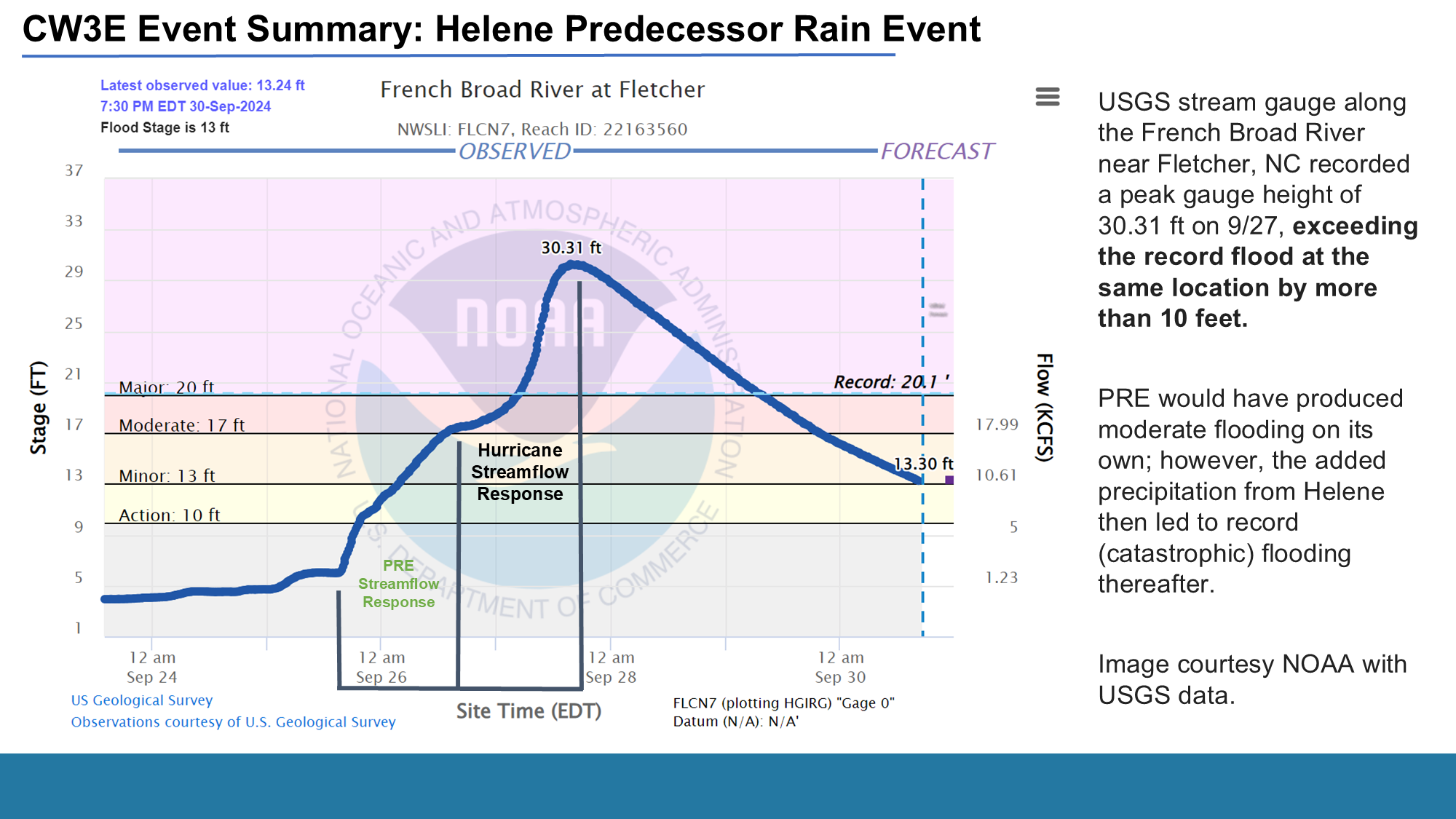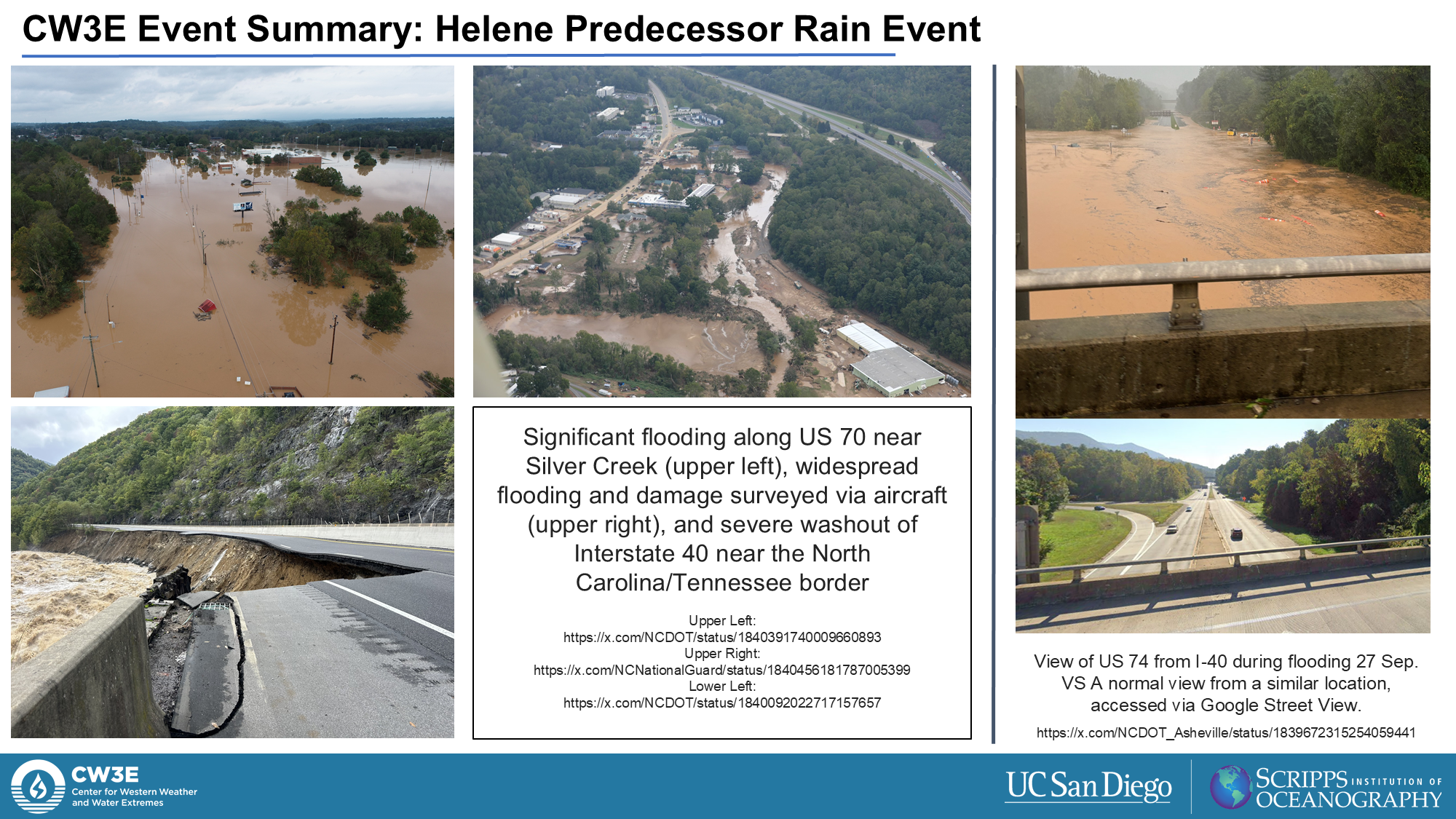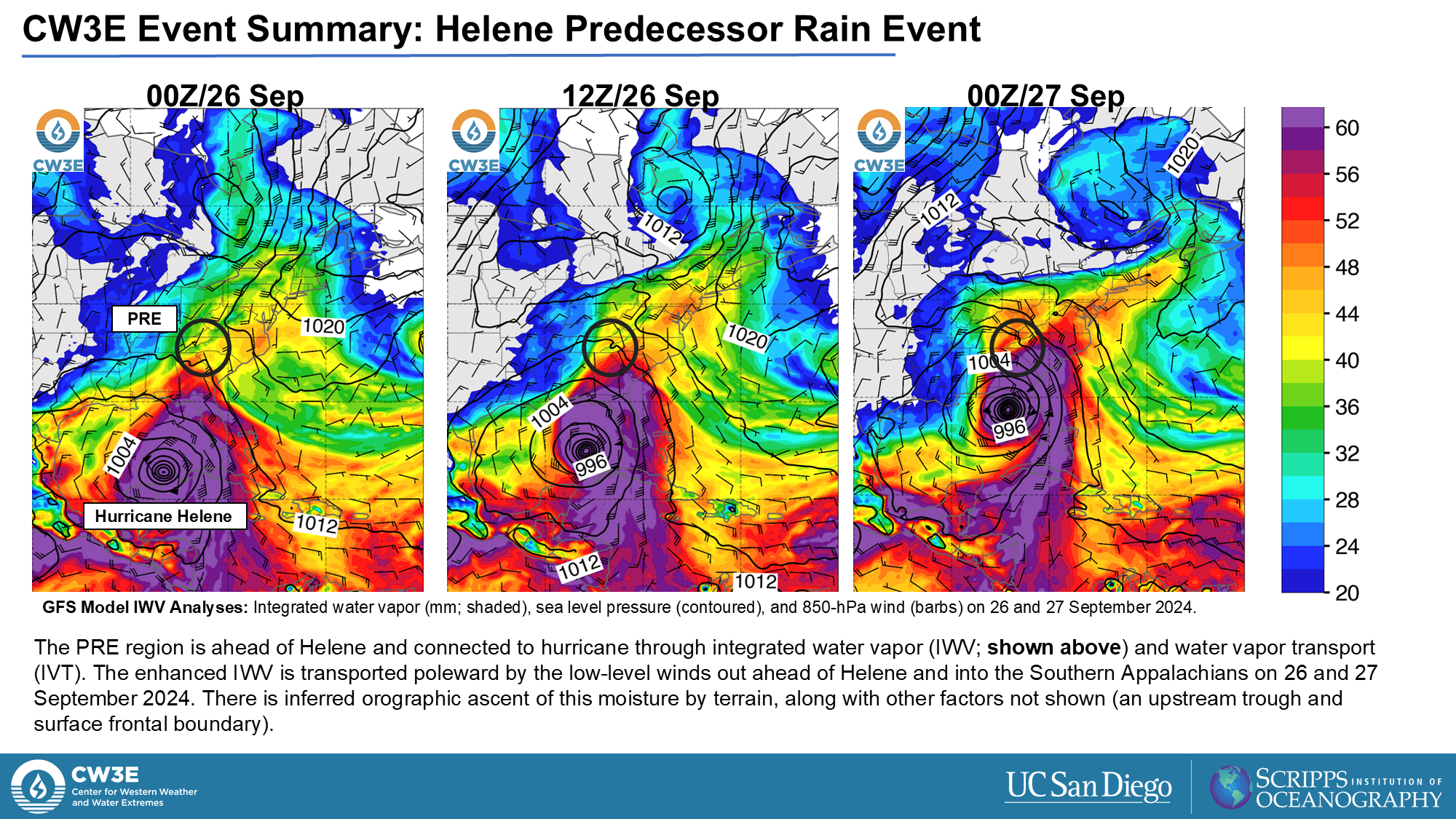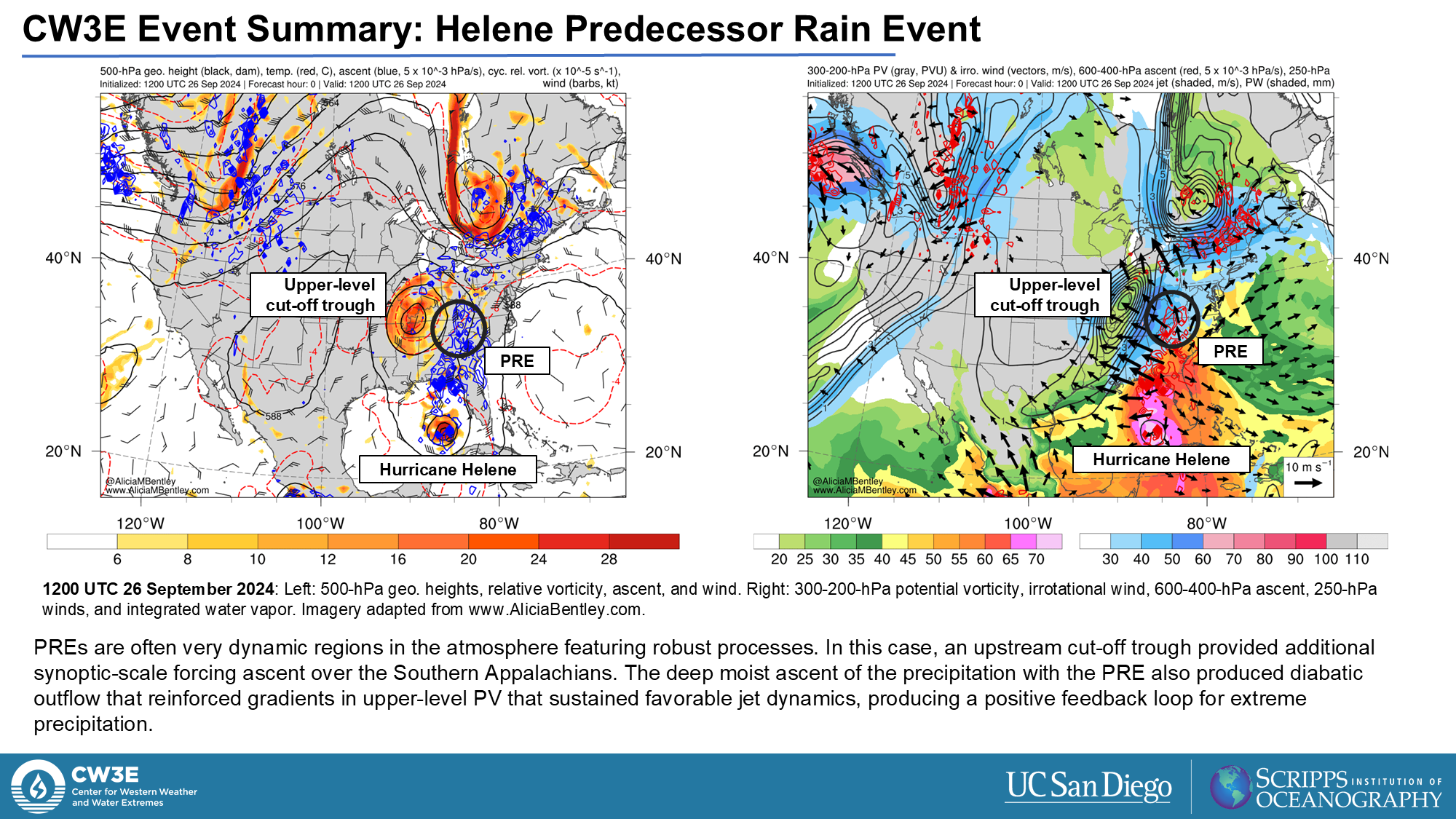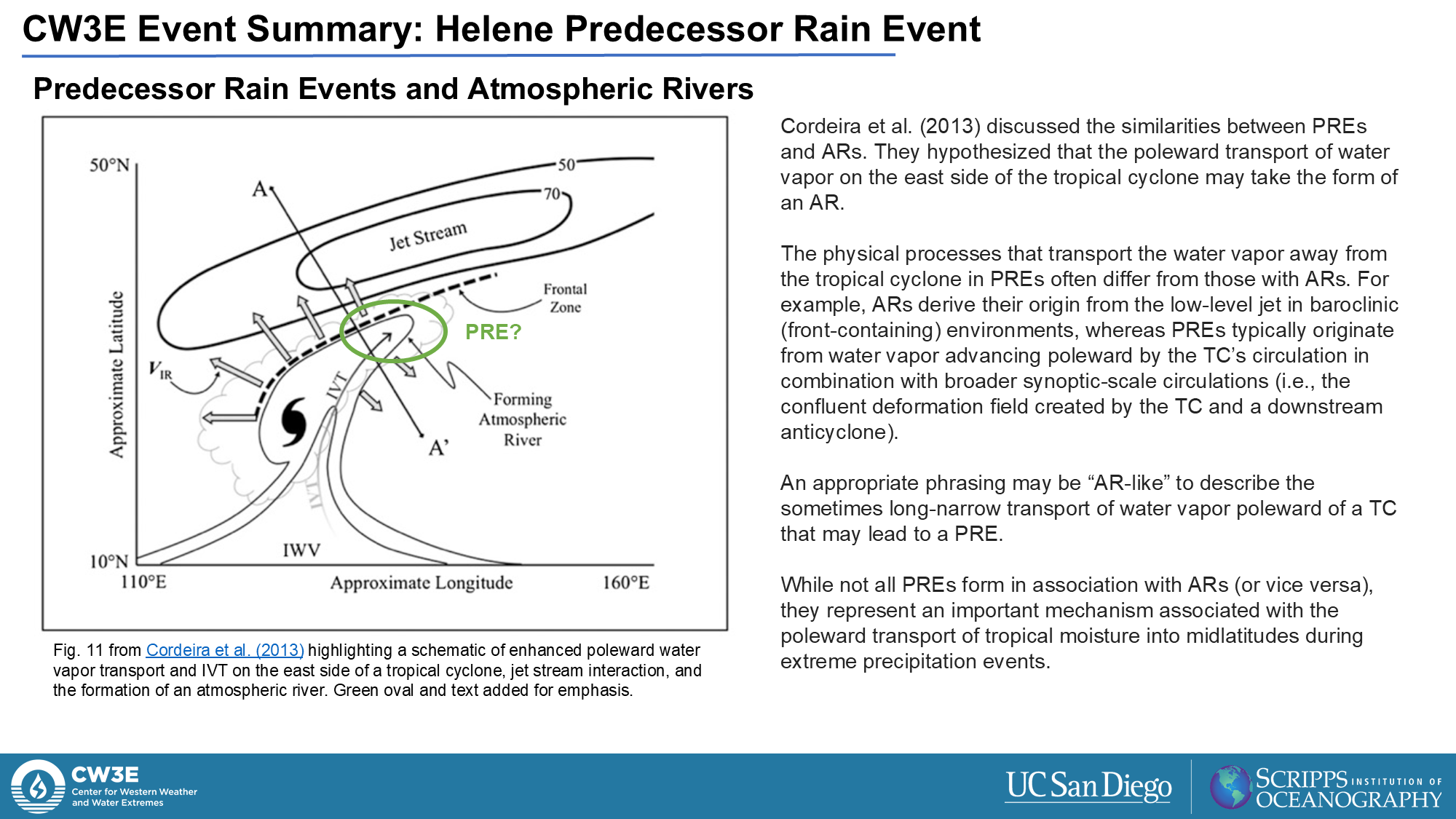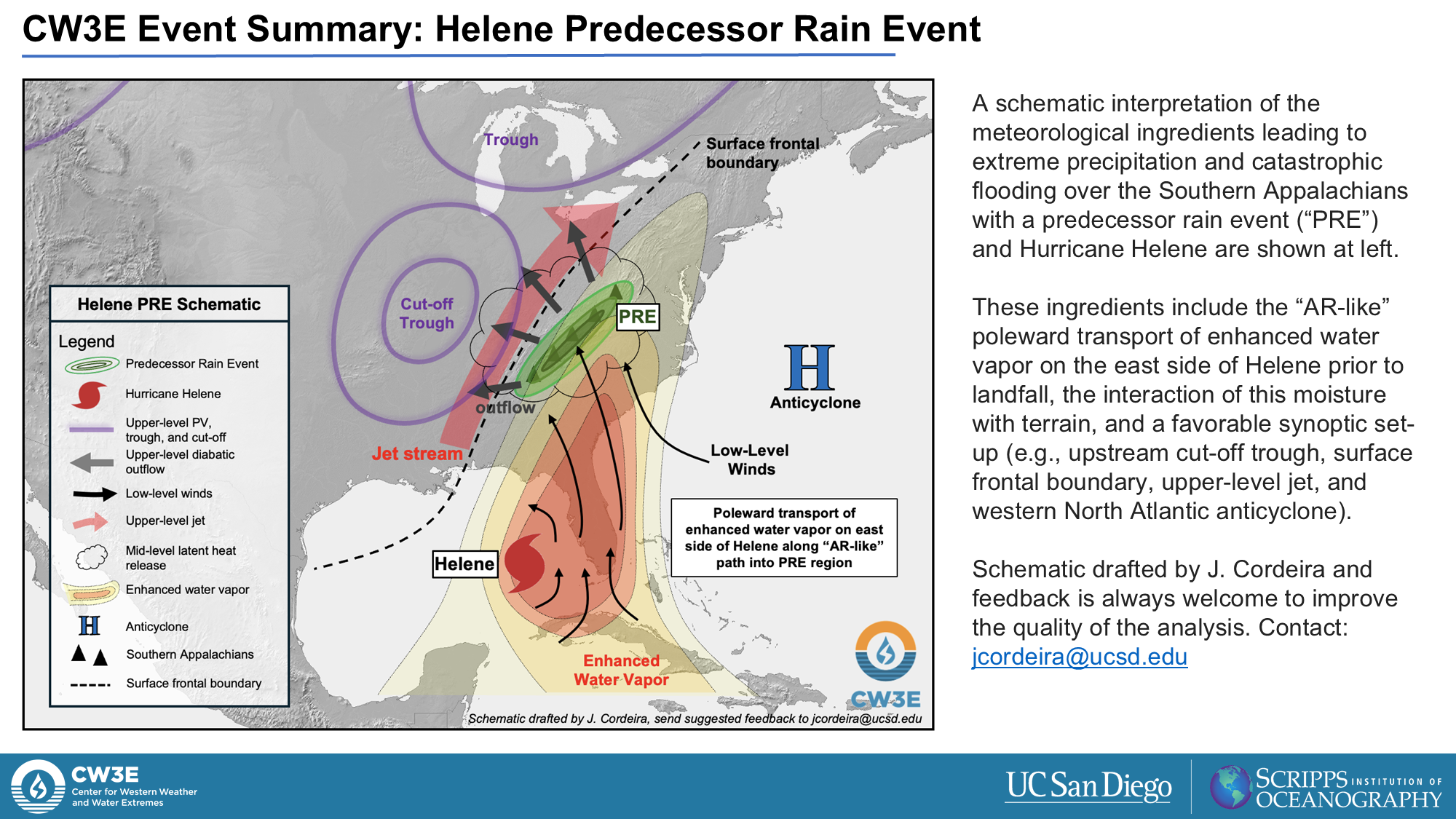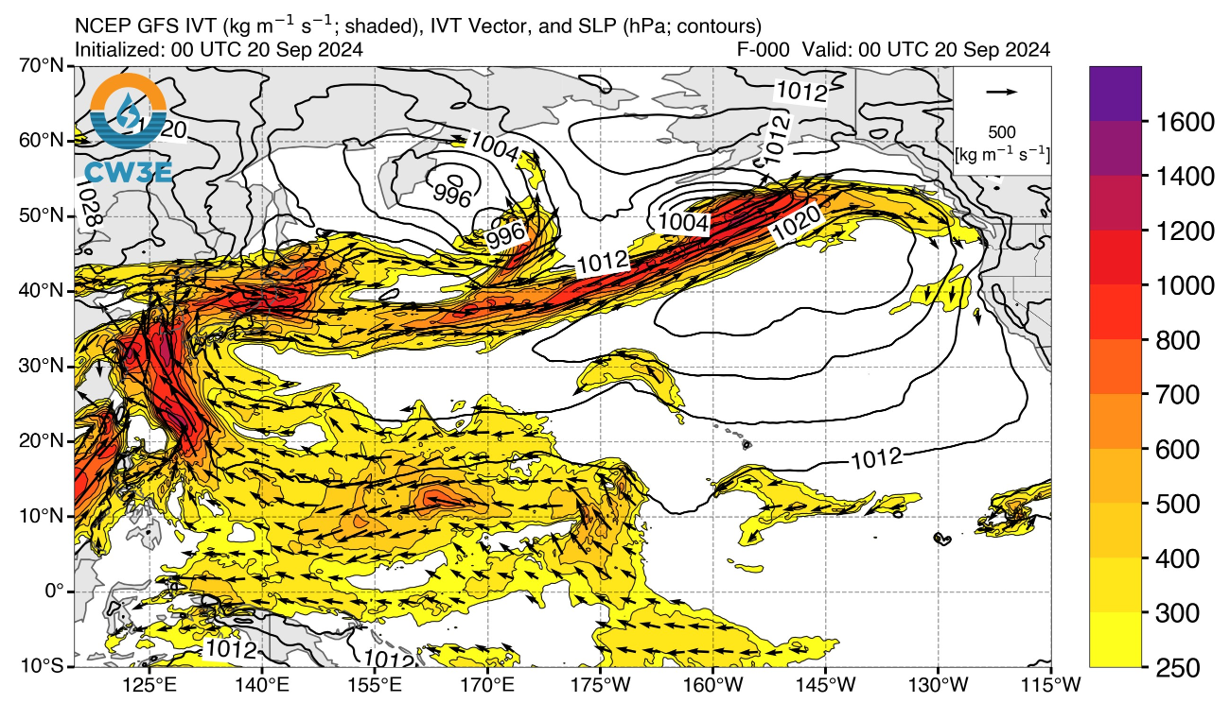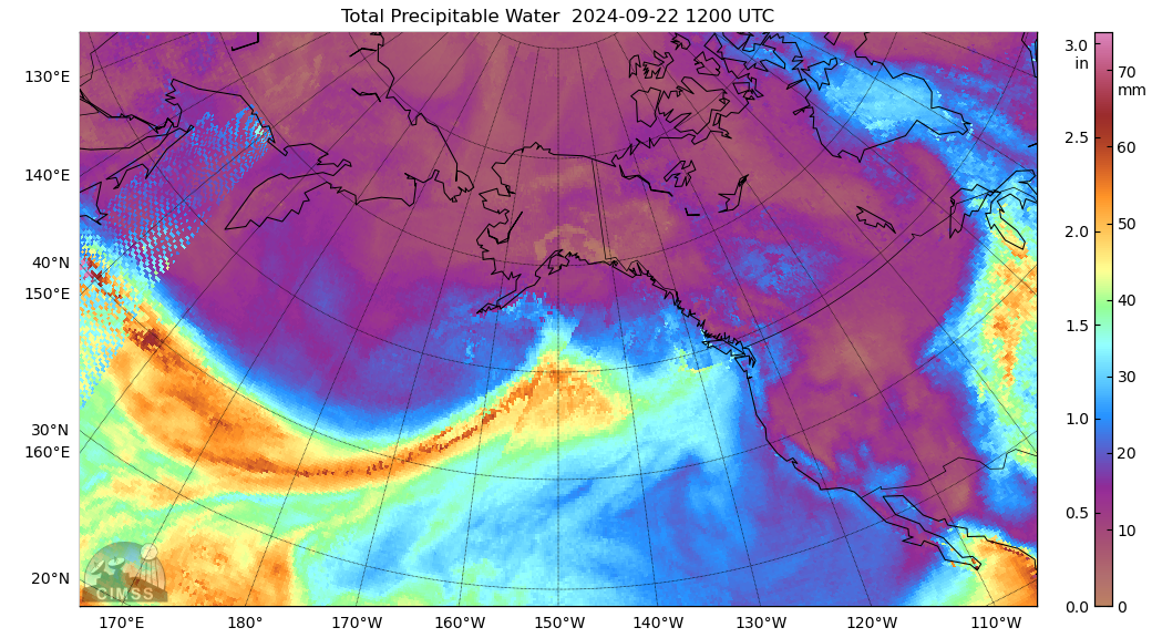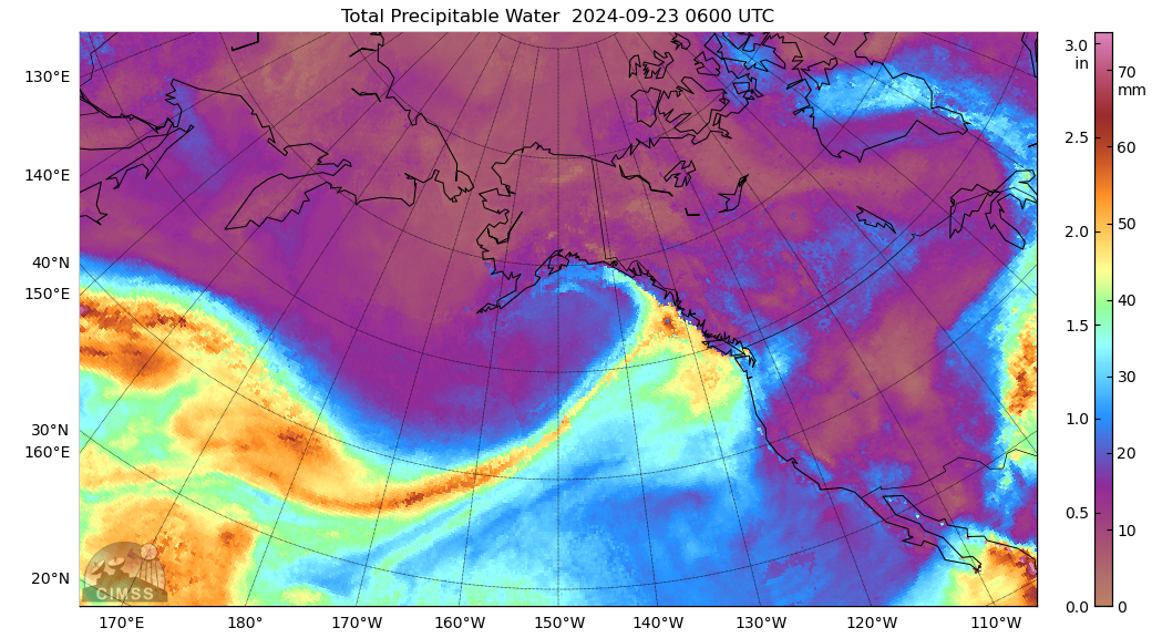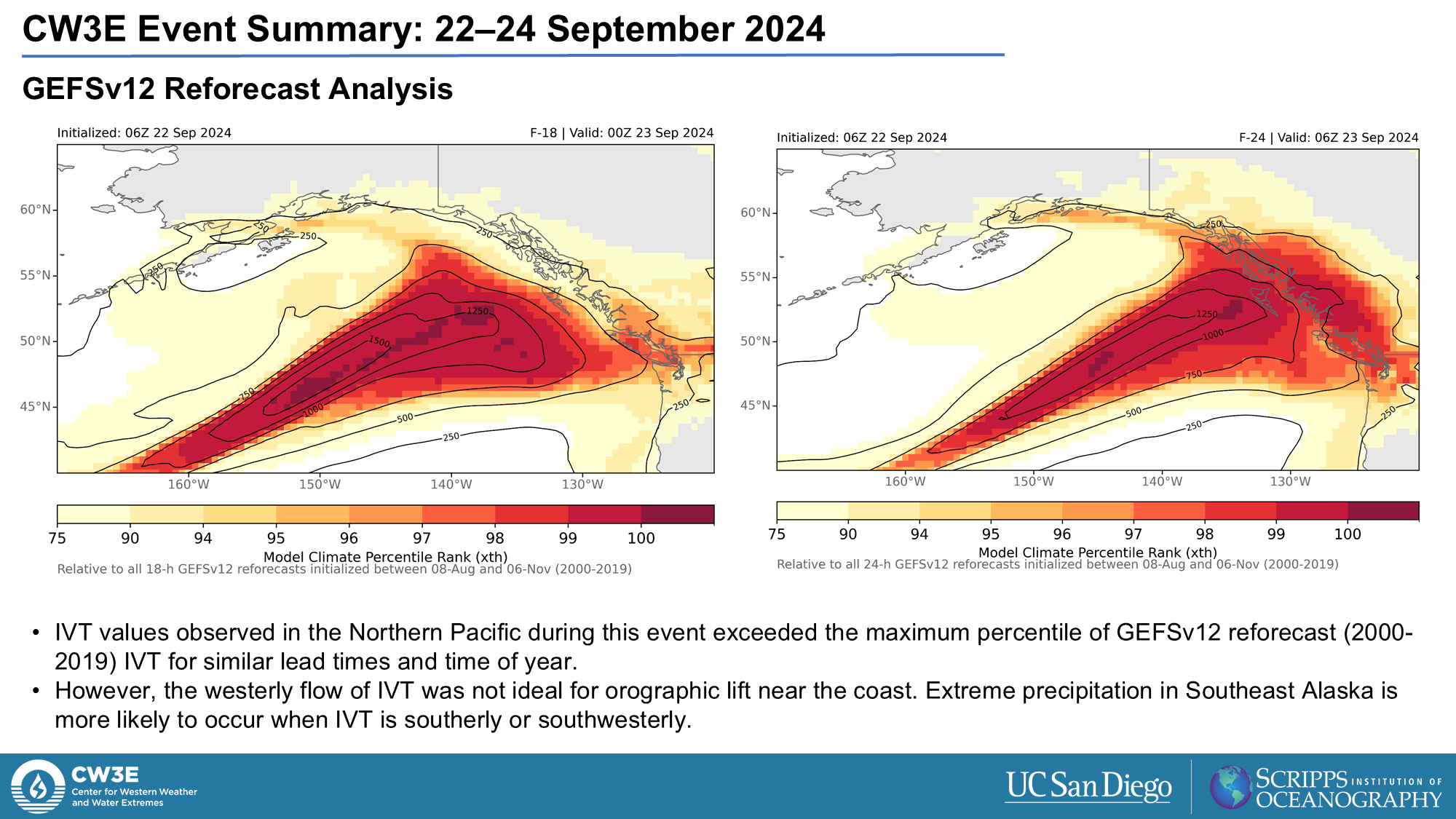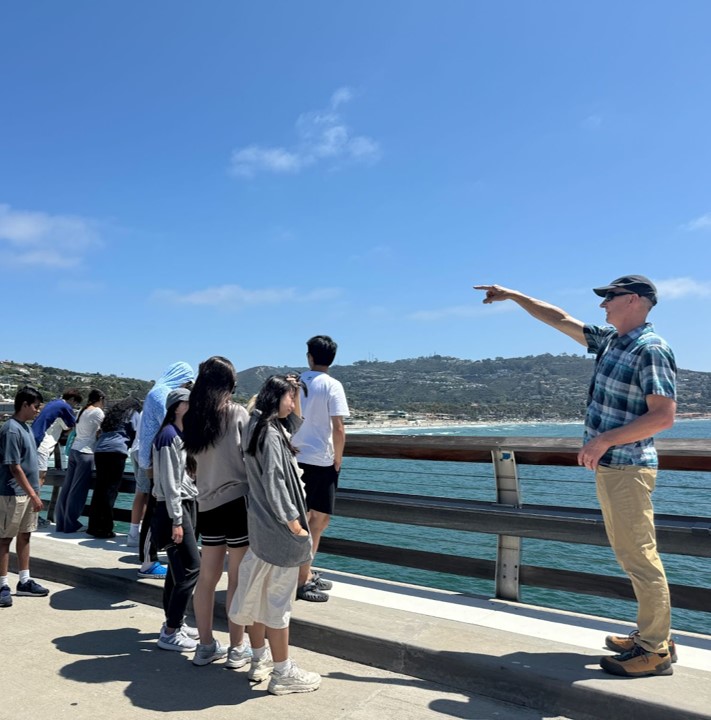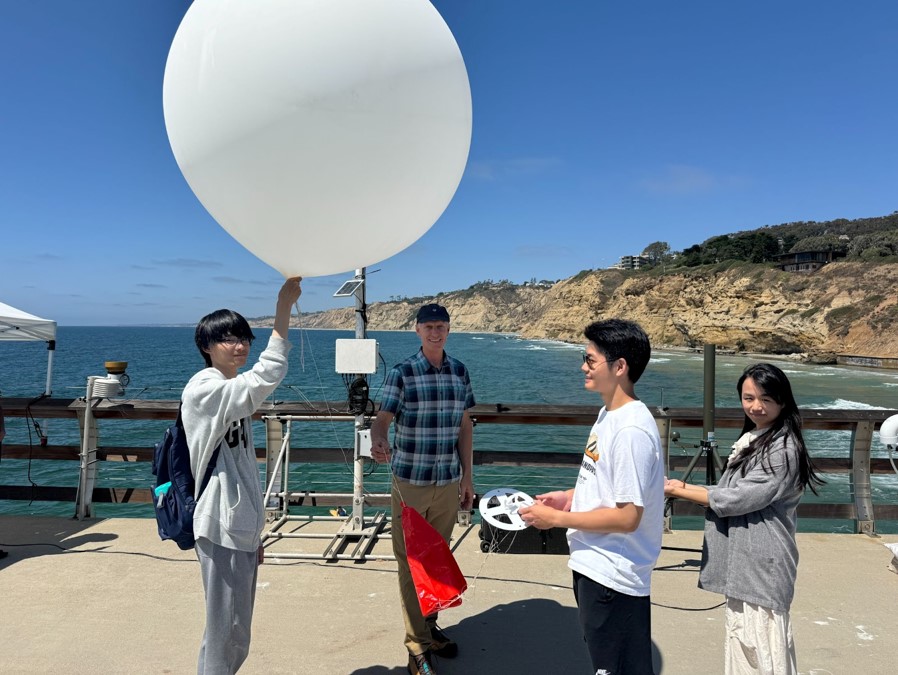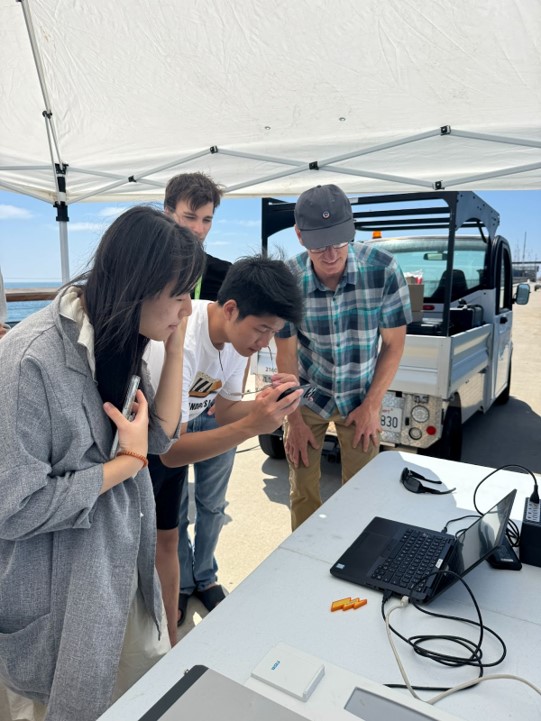CW3E Publication Notice
Extending the CW3E Atmospheric River Scale to the Polar Regions
November 25, 2024
Atmospheric rivers (ARs) are the primary mechanism for transporting water vapor from low latitudes to polar regions. They play a critical role in regional climate and extreme weather events in polar regions (e.g., Figure 1), exerting an important influence on the polar cryosphere. With the rapidly growing interest in polar ARs during the past decade, it is imperative to establish an objective framework quantifying the strength and impact of these ARs for both scientific research and practical applications.
The AR scale developed by Ralph et al. (2019) has been widely used in scientific research, weather forecasts, and media reports. While the AR scale was developed based on the climatology of water vapor transport at middle latitudes, it is insufficient for polar regions where temperatures and moisture content are significantly lower. A new paper entitled “Extending the Center for Western Weather and Water Extremes (CW3E) Atmospheric River Scale to the Polar Regions” was recently published in The Cryosphere. It is led by CW3E researcher Zhenhai Zhang and co-authored by Martin Ralph (CW3E), Xun Zou (CW3E), Brian Kawzenuk (CW3E), Minghua Zheng (CW3E), Irina Gorodetskaya (University of Porto, Portugal), Penny Rowe (North-West Research Associates), and David H. Bromwich (The Ohio State University). This paper introduced an extended version of the AR scale tuned to polar regions (Figure 2) based on the climatology there. Three new ranks specific for polar regions (AR P1, AR P2, and AR P3) with the minimum integrated water vapor transport (IVT) thresholds of 100, 150, and 200 kg m-1 s-1 are added to the standard AR scale (AR1 – AR5) to capture low-IVT ARs in both the Arctic and Antarctic. The polar AR scale also uses the same approach as the AR scale to promote or demote by one rank based on the duration of the AR at that location being less than 24 hours or longer than 48 hours.
Using the polar AR scale, this paper examined AR frequency, seasonality, trends, and associated precipitation and surface melt over Antarctica and Greenland. ARs contribute about one-third of the total precipitation amount over the coastal regions of Antarctica and Greenland. Weak and moderate ARs (AR P1 – AR2) are responsible for the majority of the AR-related precipitation amount along the Antarctic and Greenland coasts due to their relatively high frequency. Meanwhile, the strong and extreme ARs (AR3 and AR4) are usually associated with extreme precipitation, although their frequency is relatively low. In addition, ARs trigger 23% and 26% surface melting on average in Antarctica and Greenland, respectively, and around one-third of the surface melting over the coastal regions due to the relatively higher frequency and strength of the ARs over the coasts. With these high impacts, the frequency of landfalling ARs has shown significant increasing trends over the Antarctic Peninsula and East Greenland coasts in the last few decades, indicating the even greater importance of ARs in the polar regions, which are acknowledged to be vulnerable to a changing climate.
Based on the polar AR scale, we developed the CW3E Antarctica AR Scale Forecast tools using the NCEP Global Ensemble Forecast System (GEFS). These tools were extensively used in guiding radiosonde launches during the targeted observing periods (TOPs) in the Year of Polar Prediction in the Southern Hemisphere project (YOPP-SH), demonstrating reliability in guiding radiosonde launches from 24 stations during TOPs (Bromwich et al., 2024). Figure 3 shows an example of the CW3E Antarctica AR Scale Forecast tools. Our recently funded project by the National Science Foundation (NSF) will enhance the CW3E Antarctica AR Scale Forecast tools by incorporating real-time forecast data from the Antarctic Weather Research & Forecasting Model (WRF) Mesoscale Prediction System (AMPS) in the National Center for Atmospheric Research (NCAR), supporting both research and operational objectives. Additionally, we will also develop similar polar AR scale forecast products for Greenland in the future.
Overall, the CW3E polar AR scale provides an objective and concise description of the strength of AR events at the locations of interest based on their intensity and duration in the Antarctic and Arctic regions. It has the potential to enhance communication regarding ARs across observation, research, and forecast communities in polar regions.
Figure 1. An extreme landfalling AR over East Antarctica during 16–18 March 2022 based on ERA5 reanalysis. (a) Three-day time-integrated IVT (T-IVT) during 16–18 March 2022 as a percentage of normal (mean 3-day T-IVT during 1980-2021); the sub-panel at the top left shows the IVT (colors start from 200 kg m-1 s-1 with an increment of 100 kg m-1 s-1) at 00 UTC on 17 March. (b) Time series of averaged 3-day T-IVT within the blue box in panel (a) for 2022 (red), 1980-2021 (black), and climatological mean (1980-2021, green). (c) Temperature anomaly on 18 March 2022 based on ERA5 reanalysis. (d) Time series of 3 hourly observed temperatures at Dome C station (blue dot in panel a and c) for 2022 (red), 1996-2021 and 2023 (gray), and climatological mean (1996-2023 mean, blue). (Figure 1 in Zhang et al., 2024)
Figure 2. An extended AR scale for polar regions that categorizes AR events based on the duration of AR conditions (IVT ≥ 100 kg m-1 s-1) and the maximum IVT in the duration at a specific location. This scale includes ranks (AR P1, AR P2, and AR P3) designed specifically for ARs in polar regions. (Figure 5 in Zhang et al., 2024)
Figure 3. CW3E AR scale ensemble diagnostic forecast tool for 70°S, 5°E from the GEFS. initialized at 06Z 04/15/2022. Dots along the Antarctic coast indicate locations where information such as that shown in other panels can be provided; here other panels refer to the larger point at 70°S, 5°E).(a) Maximum Polar AR scale forecast over the next seven days along the Antarctic Coast (colored dots), enlarged dot represents the location shown in panels b-d. (b) Seven day forecast of IVT from each ensemble member (thin gray lines), the ensemble mean (green line), control member (black line) and +/- 1 standard deviation from the ensemble mean (red and blue lines and gray shading). Color shading represents the timing of the Polar AR scale from the control member. (c) Forecasted probability of each Polar AR scale ranking as a function of lead time based on the number of ensemble members predicting an AR. (d) Forecasted Polar AR scale timing and ranking from each ensemble member, text values represent the maximum IVT magnitude and timing during a forecasted AR. (Figure 14 in Zhang et al., 2024)
Zhang, Z., Ralph, F. M., Zou, X., Kawzenuk, B., Zheng, M., Gorodetskaya, I. V, … & Bromwich, D. H. (2024). Extending the Center for Western Weather and Water Extremes (CW3E) Atmospheric River Scale to the Polar Regions. The Cryosphere, 18(11), 5239–5258. https://doi.org/10.5194/tc-18-5239-2024
Ralph, F. M., Rutz, J. J., Cordeira, J. M., Dettinger, M., Anderson, M., Reynolds, D., … & Smallcomb, C. (2019). A scale to characterize the strength and impacts of atmospheric rivers. Bulletin of the American Meteorological Society, 100(2), 269-289. https://doi.org/10.1175/BAMS-D-18-0023.1
Bromwich, D. H., Gorodetskaya, I. V., Carpentier, S., Alexander, S., Bazile, E., Heinrich, V. J., … & Zou, X. (2024). Winter Targeted Observing Periods during the Year of Polar Prediction in the Southern Hemisphere (YOPP-SH). Bulletin of the American Meteorological Society, 105(9), E1662-E1684. https://doi.org/10.1175/BAMS-D-22-0249.1





